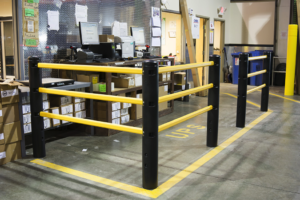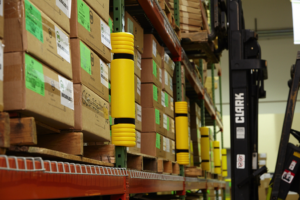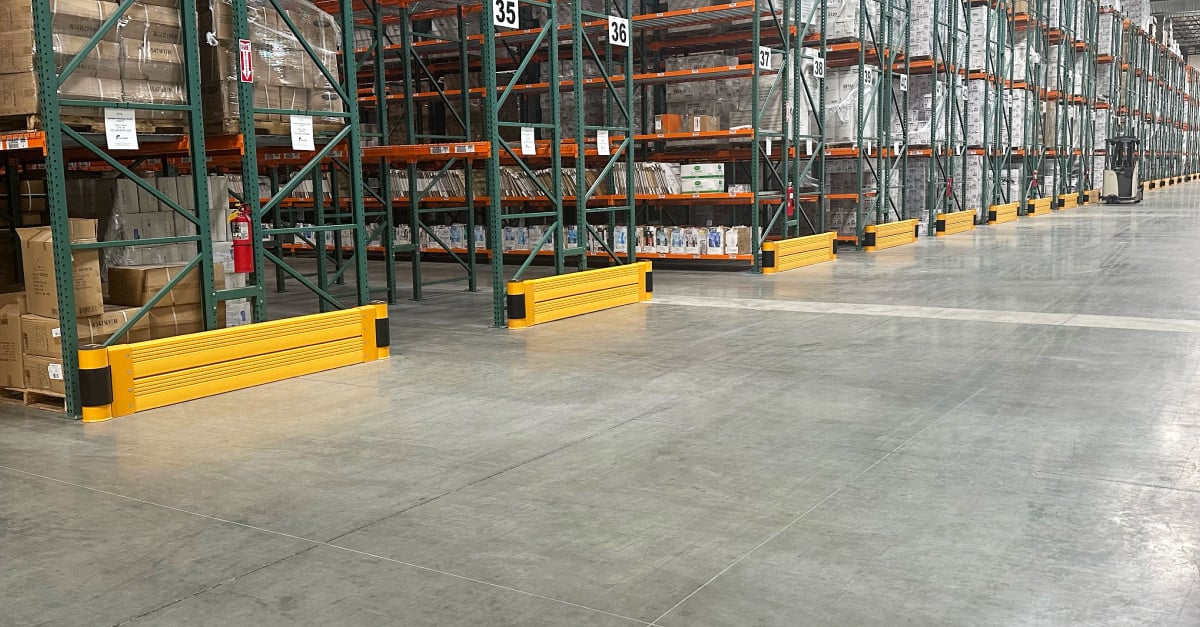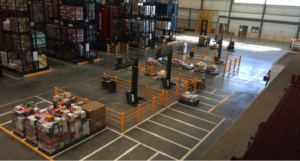Some workplaces are just as dangerous to pedestrians as crossing a busy street during rush hour. Forklifts, pallet jacks and other powerful machinery occupy aisles. Heavy freight is stacked to the ceiling nearby. Floors take on chemical spills and loose debris. Simply walking to the break room can be hazardous to one’s health.
But there are many ways facilities can improve pedestrian safety.
Making Workplaces Safe For Pedestrians
When it comes to pedestrian safety in the workplace, every risk comes with a solution.
Risk: Machinery
Imagine a forklift flying around a blind corner at a high speed while carrying a huge load that obstructs the view of the driver. Noise from other operating equipment blocks that of the forklift, so nearby pedestrians don’t even hear it coming.
No, it’s not a scene from a scary movie. It’s the scene in many workplaces. In fact, 36% of all victims of forklift accidents are pedestrians.
Solutions:
- Forklift traffic should be kept separate from pedestrian traffic. This can be accomplished by using barriers and railings to establish different lanes.
- Forklifts should not be operated with loads that are so large that the view of the driver is blocked.
- Drivers should slow down and sound the horn whenever approaching a corner, doorway or intersection.
- Impose and enforce speed limits for forklifts.
- Install mirrors at blind corners.
- The Occupational Safety and Health Administration (OSHA) requires aisles that are used for forklifts to be marked as such and kept free of obstructions.

Risk: Stacked Inventory
Inventory is stacked high, and the shape of the product leads to uneven and unstable piles. Some of the pallets supporting these stacks are old. Heavy machinery passes by, and just one glancing blow from a pallet jack could send a stack of inventory tumbling to the floor below.
It’s happened, and it’s claimed the lives of store customers.
Solutions:
- Bollards, barriers and rails should be used to prevent any contact between machinery and storage racks.
- Stacks of inventory should be kept at a safe height and chains or ropes should be used to secure the inventory in place.
- The heaviest inventory should be placed on the bottom of stacks and objects should get lighter the higher they are in the stack.
- Pallets and storage racks should be inspected for stability on a regular basis.

Risk: Slips and Falls
Liquids, powders and other slippery substances spill onto workplace floors from leaky or damaged inventory. Loose debris from packaging is left behind. Extra product and equipment are placed in aisles.
All of these things pose a threat to pedestrians. Slips, trips and falls make up around 20% of all workplace injuries.
Solutions:
- Ensure aisles and walkways are adequately lit.
- Encourage employees to report any spilled substances or loose debris immediately.
- Aisles should be kept free of clutter.
- Use cones and signs to block off any areas containing a slippery surface.
McCue: Keeping Pedestrians Safe
At McCue, we design products to keep pedestrians safe in the workplace. Our collection of bollards, bumpers, barriers, rails and more are used by warehouses and retail stores everywhere to protect employees and customers alike.
Contact us today to see how you can improve pedestrian safety in your workplace.
———-
Sources:
OSHA: https://www.osha.gov/pls/oshaweb/owadisp.show_document?p_table=STANDARDS&p_id=9824#1910.176(a)
EHS Today: http://ehstoday.com/forklift-safety/forklifts-and-pedestrians-do-not-mix-infographic
Biz Journals: http://www.bizjournals.com/atlanta/stories/2003/02/24/story2.html
Triumvirate Environmental: http://www.slideshare.net/TriumvirateEnvironmental/slips-trips-and-falls-infographic



